Popular free open source Linux Distributions flavours distros
A distro or distributions are versions that are derived based on the popular Linux operating system. in a simple way it distributes a software package. All distributions frequently released with some of the modifications in packages and the Graphical user interface components as an update in Linux OS.
Example: Debian, Ubuntu, Suse.
all distributions are different in terms of packages, supported configuration, license, GUI, Kernel, GNU tool.
About UNIX:
it is multi-tasking as well as a multi-user computer operating system.
It is developed on the AT&T Unix.
Developed at the Bell Labs research center in the year 1970.
Developers are Ken Thompson, Dennis Ritchie, and others.
License: proprietary, free/open-source software
Written in: C, Assembly language.
About LINUX:
Linux is an open-source Unix-like operating system.
It is based on the Linux kernel.
This operating system kernel first released by Linus Torvalds.
It is packaged in a Linux distribution.
Developer: Community; Linus Torvalds
License: GPLv2 and others
Written in: C, Assembly language
It is based on the Linux kernel.
This operating system kernel first released by Linus Torvalds.
It is packaged in a Linux distribution.
Developer: Community; Linus Torvalds
License: GPLv2 and others
Written in: C, Assembly language
Introduction to Distributions:
it supports this user interfaces Unix shell, KDE Plasma 5, MATE, Cinnamon, Unity, LXDE, elementary OS, Xfce
They are having different default software – like how Ubuntu includes Unity, Ubuntu derivatives include other desktop environments, Fedora includes GNOME Shell, and Mint includes Cinnamon or MATE.
Many Linux distributions may use different package managers, configuration utilities, and other software. Some distributions are on the lap of cutting-edge technologies and they do not receive support for a very long duration.
Many Linux distributions may use different package managers, configuration utilities, and other software. Some distributions are on the lap of cutting-edge technologies and they do not receive support for a very long duration.
Others, such as Ubuntu LTS or Red Hat Enterprise Linux is designed to be stable distributions that will be supported with security updates and bug fixes for many years.
The most Preferred & used distributions are:
Debian
- It is known as Debian GNU/Linux.
- It is a Linux distribution composed of free and open-source software.
- It is developed by the community-supported Debian Project
- OS family: Unix
- user interface: GNOME
- Package manager: APT, dpkg
- Developer: The Debian Project
- Updates: Long-term supported(LTS)
Knoppix
- It is an operating system based on Debian OS.
- It is designed to be run directly from a CD / DVD or a USB flash drive.
- It was developed by, and named after, Linux consultant Klaus Knopper.
- Default user interface: LXDE, KDE
- Package manager support: dpkg
- Languages support: German language, English Language
Linux Mint Debian Edition (LMDE) uses Debian packages directly (rather than Ubuntu)
Ubuntu
- It is based on Debian Linux distribution.
- It is composed of free open-source software.
- it is released in three editions: Desktop, Server, and for the Internet of things devices, robots.
- It can run on the computer alone or a virtual machine.
- Developed by: Canonical Ltd.
- Source: Open-source FOSS
- Programming languages Used: Python, Java, C, C++, C#

there are several distributions that are based on Ubuntu that mainly replaces the GNOME desktop environment:
1] for example like Kubuntu based on KDE, Lubuntu based on LXQT.
2]Xubuntu is based on XFCE, Ubuntu MATE is based on MATE.
3] Ubuntu Budgie is based on Budgie.
4]Other official versions have specific uses like Ubuntu Kylin is for Chinese-speaking users or Ubuntu Studio is for media content creators.
Linux Mint
- It is a community-driven Linux distribution.
- It is completely based on Ubuntu or Debian.
- It is packaged with a variety of free and open-source applications.
- It can provide full multimedia Operation support.
- user interface: Cinnamon
- OS family: Linux/Unix
- Update method: APT and Software Manager, Update Manager & Synaptic package manager user interfaces
- Package manager support: dpkg & Flatpak
- This Linux distribution was developed by the open community-support fedora project.
- It is a project by Red Hat and a subsidiary of IBM.
- Developed by the corporation: The Fedora Project
- OS family: Unix
- Update methods available: DNF, yum
- It is created and published by the company Red Hat.
- It is the most used Linux distribution,
- It also comes in the Red Hat Commercial Linux license.
- The Red Hat published its first non-beta release as OS.
- Developed by: Red Hat Software
- OS family: Linux/Unix
- Developer community: Red Hat
- Source model: Open-source model
- it is a Linux distribution.
- It provides a free, community-supported computing platform.
- Its functionalities are compatible with Red Hat Enterprise Linux.
- release date: 14 May 2004
- OS family: Linux
- License: GNU GPL and other
- Source model: Open source
- Developer: The CentOS Project
- Default user interfaces: Bash, GNOME Shell
- It is a Linux distribution freely distributed by Oracle.
- It is available under GNU General Public License(GPL).
- It is compiled from Red Hat Enterprise Linux.
- Developed by Corporation: Oracle Corporation
- License supported: GNU GPL
- Update method supported: yum (PackageKit support)
- OS family: Linux/Unix
- It is a Linux distribution by Fermilab, CERN, DESY and, ETH Zurich.
- It is an open-source and free operating system based on the Red Hat Enterprise edition of Linux.
- This product is forked from the open-source software from Red-Hat, Default user interface supported: GNOME
- Update method supported: yum
- Package manager supported: RPM Package Manager
- It is a discontinued Linux distribution.
- It was developed by Mandriva S.A.
- Mandriva supports desktop as well as Server products.
- Developed by the corporation: Mandriva
- Package manager supported: urpmi (command-line frontend support); rpmdrake (GTK frontend support).rpm (package format support)
- Source model supported: Open source (with exceptions support)
- It is a Linux-based operating system and it is distributed as free and open-source software.
- It is a fork of the Mandriva Linux distribution.
- The term mageía means enchantment, glamourous, wizardry.
- License: GNU
- Package manager: urpmi (command-line frontend support); rpmdrake (graphical frontend support).rpm (backend support)
- OS family supported: Unix
- Default user interfaces supported: KDE Plasma 4, GNOME Shell, Xfce
- It is often known as PCLOS.
- It is an x86-64 Linux distribution.
- It comes with KDE Plasma Desktop, MATE, and XFCE as its user interfaces.
- the free operating system for personal computers.
- It is considered a rolling release.
- Package manager support: apt-get (RPM)
- Source model: Open-source model
- Developers: Bill Reynolds
- user interfaces supported: KDE, MATE, Xfce
It is known as SUSE Linux.
It is a Linux distribution sponsored by SUSE Software Solutions and GmbH.
Developer corporation: The openSUSE Project
Package manager supported: ZYpp ; YaST (front-end support); RPM (low-level support)
Default user interfaces supported: GNOME Shell, Xfce, KDE Plasma 5
Available in languages: English Language, German language, Russian Language, Portuguese Language
- It is known as SUSE enterprise edition Linux.
- It is a Linux distribution sponsored by SUSE Software Solutions and GmbH.
- Developer corporation: The openSUSE Project
- Package manager supported: ZYpp ; YaST (front-end support); RPM (low-level support)
- Default user interfaces supported: GNOME Shell, Xfce, KDE Plasma 5
- Available in languages: English Language, German language, Russian Language, Portuguese Language
Arch Linux
- Arch Linux is a Linux distribution for computers with X86 as well as X64 processors.
- Arch Linux shows five principles: simple, modern pragmatism, user central, and versatile.
- Default user interface: Command-line interface (Bash)
- OS family: Unix
- Source model: Open source
- It is a free open-source Linux distribution.
- It is created on the Arch Linux operating system.
- It focuses on user-friendliness and accessibility.
- It comes with its variety of pre-installed software.
- OS family: Linux/Unix
- Package manager support: pacman, libalpm (back-end)
- Developed by: Manjaro GmbH & Co. KG
- Default user interfaces supported: Xfce, KDE Plasma 5, GNOME
- This Linux distribution is based on the Portage package management system.
- It is not like binary software distribution, the whole source code is compiled locally.
- Supports user's preferences and it is optimized for the specific computer type.
- Package manager support: Portage
- License support: Free software
- Source model: Open-source model
- Developer corporation: Gentoo Foundation
- user interfaces supported: Xfce, LXQt, GNOME, Fluxbox, i3, Sway
- It is a free open-source operating system.
- It is built to run web applications and to browse the World Wide Web.
- It is the development version of Chrome OS and Linux distribution proposed by Google.
- This OS also includes the Portage package manager, which was Part of Gentoo Linux.
- Source model: Open source
- Developer: Google
- user interface support: Chromium (web browser), Aura Shell (Ash)
- It is a simple Linux distribution by Patrick Volkerding.
- It is completely based on the Softlanding Linux System.
- It has been acting as a base for many other Linux distributions.
- Developer: Patrick Volkerding
- Package manager supported: pkgtool, slackpkg
- Update method used: slackpkg
- Source model: Open source model
Popular Linux distributions with examples:
1]RPM based
Linux distributions that use .rpm remote package manager file format.
Examples:
Fedora, Mandriva, Open Suse, Red Hat.
2]Cent OS /RHEL based
Examples:
scientific Linux, Oracle Linux, Fermi, Miracle
3]Fedora based
supports community distributions with the latest software free of cost.
Examples:
Berry, Blag, Linux XP, Trustix
4]Open SUSE based
Examples:
Suse Enterprise, Suse Desktop, Gecko Linux
5]urpmi-based
Examples:
Mandriva, Mageia, Rosa, Unity
6]apt-rpm based
Examples:
PC Linux, Vine, ALT
7]independent RPM-based
Examples:
Caldera, cAos, Turbolinux
8]Debian Based
Examples:
BackTrack, gLinux, Kali, Ubuntu, Astra
9]Ubuntu-based
Examples:
Ubuntu
10]official distributions
Examples:
Kubuntu, Lubuntu, Ubuntu mate, Ubuntu Server, Xubuntu
11]Third party distributions
Examples:
elementary, KDE neon, LiMux, Vinux, Zorin
12]Debian Based stable distributions
Examples:
Astra, Bharat, Raspberry Pi, Slax
13]Mepis
Examples:
antiX, MX Linux
14]knoppx
Examples:
Damn, Feather
15]pecman
Examples:
Arch Linux, Artix, Arch Labs, Manjaro
16]Gentoo
Examples:
Calculate, Chrome OS, Chromium OS, Tin Hat
17]slackware
Examples:
Kate, Mu Linux, Salix, Santry, Zip Slack
18]slax based
Examples:
DNA Linux, Porteus
19]source based
Lunar, Guix



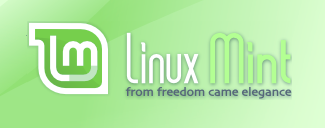

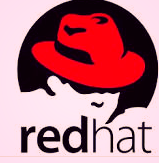
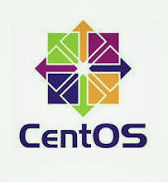

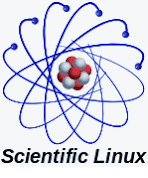



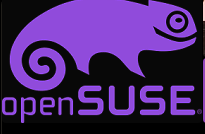
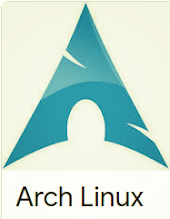

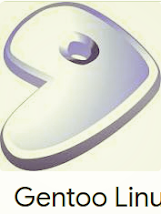
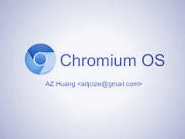

Comments
Post a Comment
Thanks for your valuable input